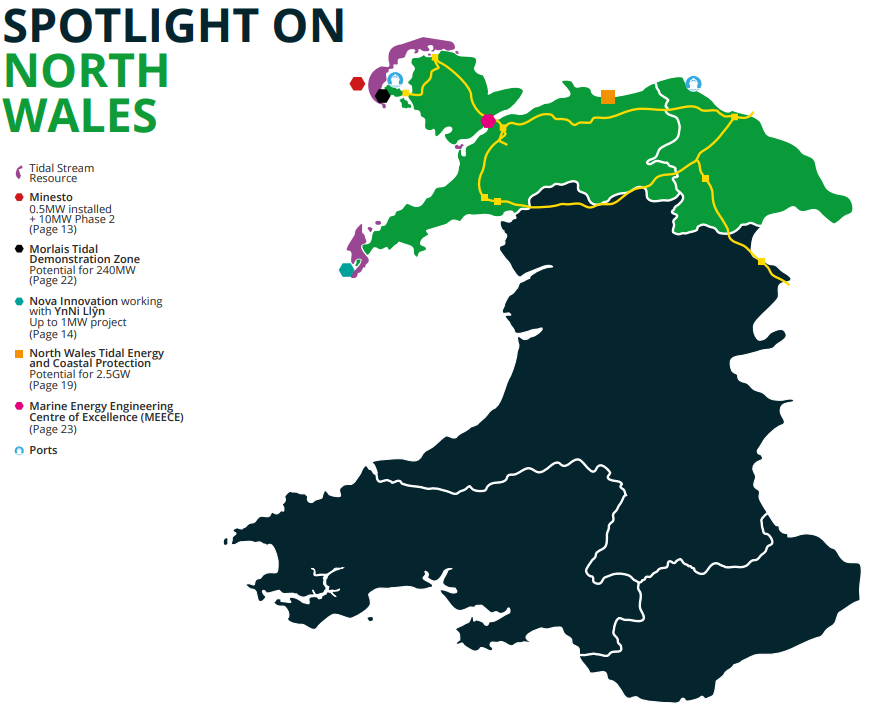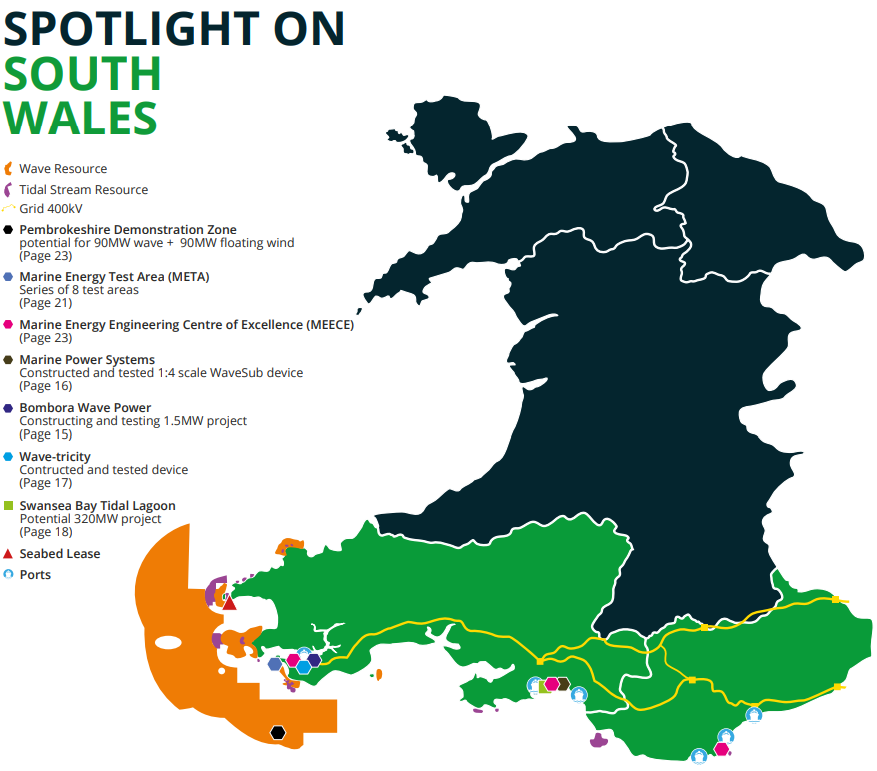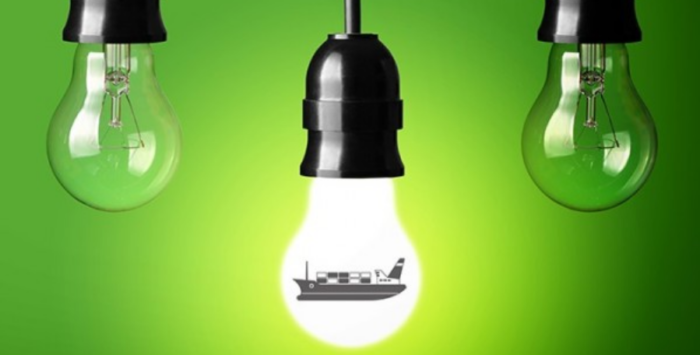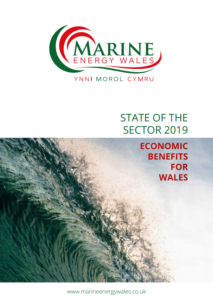Marine Energy Wales has released a new report at its annual conference, highlighting that £96.2 million has been invested into the Welsh economy. The ‘State of the Sector’ report is based on the findings of a survey and provides an update on a 2017 report, outlining developments that took place in Welsh waters.
Specifically, the report’s key findings are:
- A total of 16 marine energy developers are actively progressing projects in Wales with seabed agreements in place for over 362 MW of marine energy sites. Further sites totalling almost 3.5 GW have also been identified.
- £96.2 million has been spent to date in Wales on the development of the marine energy industry. The sector is driving inward investment with a number of international wave and tidal developers having relocated their headquarters to Wales.
- With over 566 person years of employment to date, the sector is providing skilled employment and spurring low carbon economic growth in coastal regions across the country.
- Marine energy is offering real diversification opportunities for local supply chain companies. The Welsh supply chain has capability, capacity and ambition to deliver marine energy projects.
- A number of test and demonstration sites are under development in Wales. These projects will provide test beds for innovative wave, tidal stream and floating wind technologies, enabling valuable learning across the sector and adding to the UK’s world-leading test centre network.
- Wales is home to world class research facilities offering a wide range of services to commercial businesses including a £17m SEACAMS2 research project.
- Wales has the potential to establish an early mover advantage in an export market worth an estimated £76 billion by 2050, exporting marine energy technologies, skills, knowledge and intellectual property across the globe.

First Minister, Mark Drakeford, commented
Wales’ natural resources place us in a unique position to harness the significant potential of marine energy. This report clearly demonstrates how the sector is already bringing wide-ranging economic and environmental benefits.
David Jones, project director of Marine Energy Wales stated that this report clearly demonstrates the positive impacts marine energy is having in Wales, particularly in coastal regions such as Anglesey and Pembrokeshire that are most in need of economic regeneration. It is pleasing to see that Wales is playing an important role in keeping the UK at the forefront of this global low carbon innovative sector.

Concluding, the research findings include:
- Tidal stream energy: Tidal stream energy developers including Minesto and Nova Innovation along with the development of the Anglesey Tidal Demonstration Zone ‘Morlais’ have contributed a total of £46.8 million of direct investment to the Welsh economy to date. This represents an increase of £17.4 million since 2017.
- Wave energy: Wave energy developers, including Marine Power Systems, Bombora and the development of the Pembrokeshire Demonstration Zone have contributed £12.5 million direct investment to the Welsh economy to date. This represents an increase of £8.9 million over the past two years.
- Tidal range energy: Tidal range energy development in Wales, including Swansea Bay Tidal Lagoon and the North Wales Tidal Energy and Coastal Protection project have contributed £6.2 million of direct investment to the Welsh economy to date.
- Total direct investment: Combining the investment into wave and tidal energy in Wales with publicly funded Welsh research projects brings the total investment to date in marine energy in Wales to £96.2 million – an increase of £27.9 million since 2017 and £50.8 million since 2015.
- The £96.2 million of total investment into Welsh marine energy projects represents direct spend by project developers and research projects. Figures reported in previous research suggest that every £10 million of investment in resources in marine energy could be associated with total gross value added effects in Wales of around £2.5 million (including direct, supply chain and associated household effects)1.
For more information, you may click on the PDF herebelow































































